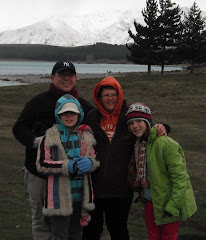Our European adventure kicked off with a smooth departure from Brisbane, buzzing with excitement and just a pinch of bittersweet as we said goodbye to our beloved cat, Squirrel. Venice greeted us like a dream with its enchanting canals and Tresente's timeless charm and coffee, though wrestling with Brisbane airport check-in kiosks early on was less magical.
Setting sail on our Mediterranean cruise, we soaked up stunning ports from Ravenna to Rome, diving into history, as well as cultural delights of wine and food, and as well as enjoying the onboard entertainment and sea views. Sure, weather delays and tourist crowds tried to rain on our parade, but the cultural feast more than made up for it.
Rome was a whirlwind of ancient wonders and lively streets. We marveled at the Colosseum and Vatican treasures, savored local markets, and indulged in delicious food. Navigating chaotic traffic and dodging persistent street vendors kept us on our toes, adding a bit of urban adventure.
Florence and Milan dazzled us with Renaissance art and vibrant café culture. From Michelangelo’s tomb to Milan’s glamorous Galleria, we soaked in the sights. Laundry and limited access to La Scala rehearsals were minor bumps in an otherwise art-filled ride.
Train rides through the Italian landscape brought breathtaking views, leading us to fly over the Alps to Amsterdam’s charming canals and windmills, then whisking us off to our cozy Parisian hotel. Battling a cold and some Eurostar boarding confusion tested our patience, but the journey was worth every twist.
Paris charmed us with iconic landmarks like Notre Dame and the Eiffel Tower, festive markets, and gourmet dining. Long queues and a missed perfume shop visit were small hiccups amid the magic. Travel fatigue hit hard with flight delays and boarding pass issues in Doha, but we powered through.
Returning to Brisbane, smooth customs and a comfy hotel helped us unwind, though lost paid seats and just four hours of sleep on the long flight left us ready for some serious rest.
All in all, our trip was a colorful tapestry of culture, food, and unforgettable moments, sprinkled with the kind of travel hiccups that makes great stories later on.
Our next adventure, Japan in October 2026 to celebrate milestone birthday or two.




















































